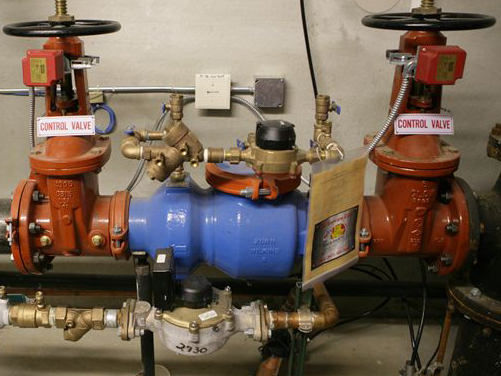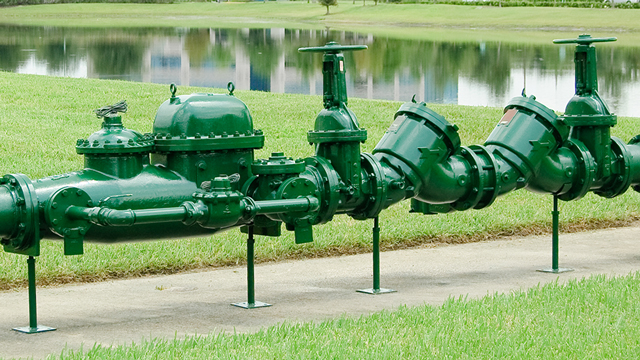Should I Backflow Test My Water
Should I Backflow Test My Water
Blog Article
Listed here down the page you will discover more dependable insights with regards to Is backflow testing necessary?.

Yes, you require to backflow examination your home's water supply to guarantee that the water is devoid of toxins and unsafe degrees of chemicals. Because of the tools needed as well as area for error, you must not attempt to perform heartburn screening on your own. We recommend that you call a specialist plumber every number of years to evaluate your water.
What is Heartburn?
In short, backflow is when water moves upwards-- the contrary direction in the plumbing system. This is also referred to as "backpressure." When the water moves in this instructions, it can combine with hazardous contaminants as well as position a threat.
What Triggers Backflow?
A regular cause of heartburn is a loss of water pressure that triggers the water to siphon back right into the water supply. After some time, there is a loss in water pressure and the tube begins to draw the water back right into the water supply. As you can visualize, there are now chemicals from the paint that are getting in the water supply, potentially presenting a threat.
Backflow Testing is Called For by Law in Certain Cities
Depending on where you live, you may in fact be required by law to backflow test your regulation. Iowa City keeps a record of all properties served by the city's water supply. The city requires that certain "high-hazard" facilities undertake heartburn screening. In many cases, residential properties such as houses as well as apartment are affected.
You Can Avoid Backflow
The main function of a heartburn tool is to prevent water from flowing backwards right into your water supply. Plumbings install the tool on the pipes in your house to ensure that the water only moves in the appropriate direction.
Backflow Can Influence Both You and Your City
Numerous cities establish backflow standards because hazardous backflow can affect the public water along with a solitary building. Modern-day cities have backflow tools in location that safeguard the water supply that comes from a lot of homes and also commercial residential properties. The actual threat comes from irrigation systems, which can damage the water with toxic fertilizers, manure, as well as other chemicals.
Call a Plumber to Examine for Heartburn Prior To It is Far too late
A plumbing firm can quickly check your residence's water to figure out if there are any kind of harmful chemical degrees. And if you do find that your water has high levels of toxins, a plumber can quickly install a heartburn avoidance tool.
Yes, you require to backflow test your home's water supply to ensure that the water is complimentary of toxic substances and unsafe degrees of chemicals. A regular reason of heartburn is a loss of water pressure that triggers the water to siphon back into the water supply. After some time, there is a loss in water stress and the hose starts to draw the water back into the water supply. The main objective of a backflow tool is to protect against water from streaming in reverse into your water supply. Numerous cities develop heartburn guidelines due to the fact that harmful backflow can influence the public water supply in addition to a single building.
WHY DOES BACKFLOW TESTING NEED TO BE DONE EVERY YEAR
What Is Backflow?
Toxic gas backing up into a building is one example of potential backflow issues, but backflow can occur in many other ways.
Backflow is generally referred to as the reversal of a liquid or gas in a plumbing system.
Most issues for the public occur with backflow resulting in contaminated drinking water. If you look up backflow issues online you’ll probably find references to “potable” water. That means drinking water.
There have been backflow issues in the past with drinking water. Chemicals, sewage and other contaminants have found their way into drinking water causing health issues for those that count on the fresh water.
What Causes Backflow?
In a residence or commercial building water generally flows one way. This normal flow is usually driven by consistent pressure in the water and waste system.
Anything that changes the normal pressure in the system can lead to backflow.
Fire hydrant use or malfunction can reverse the normal pressure in the system on a city line, but backflow can occur in a number of different ways.
Sometimes backpressure might be caused by someone using a garden hose and submerging the end of the hose in a pool of liquid. If pressure is lost the flow could reverse and contaminants could be released into the drinking water.
Anytime there is a connection between contaminants and the drinking water there is potential for a backflow issue. Sometimes these connections are not immediately obvious like the garden hose connecting to a building’s drinking water supply.
Backflow Regulations
The Environmental Protection Agency (EPA) provides guidelines and regulations for state and local governments regarding backflow. State and local governments also have their own guidelines and regulations for backflow prevention.
Arizona has its own backflow regulations.
Due to issues with backflow in the past, regulations require backflow preventer devices to be used in nearly all residential and commercial buildings.
A backflow preventer is a device that prevents backflow as cross-connection points where potential backflow issues may occur.
While backflow is not a common occurrence, preventers are in place to make sure there is no contamination should something malfunction or go wrong with a building’s water supply.

We hope you enjoyed our topic on Backflow Assembly Testing. Thank you for spending some time to read our content. Enjoyed reading our blog? Please share it. Let somebody else check it out. Thanks so much for taking the time to read it.
Trust us, dial! Report this page